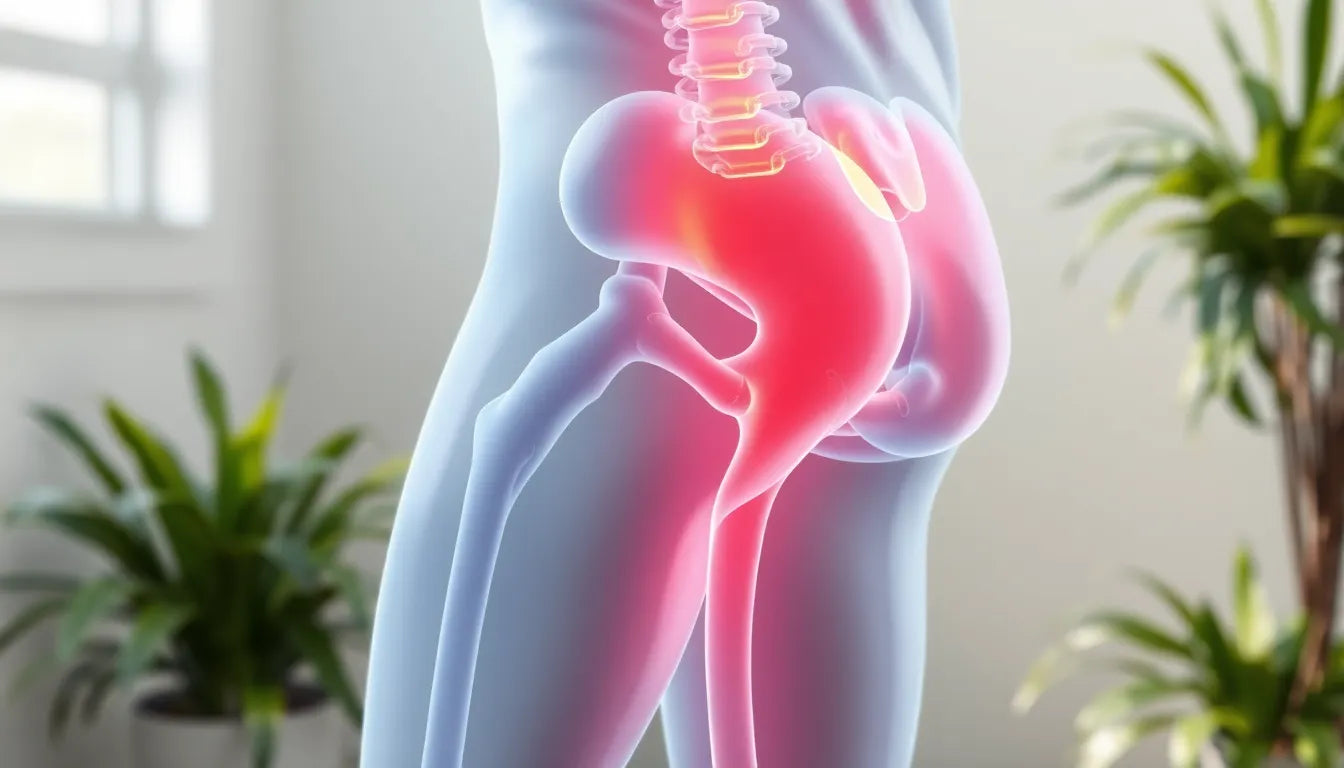Back muscles play a crucial role in our daily lives, serving as the backbone—quite literally—for posture, movement, and overall health. These muscles are responsible for supporting the spinal column, enabling a range of movements, and maintaining balance and stability. Despite their importance, back muscles are often overlooked until discomfort or injury occurs. Understanding their function and structure is essential for anyone looking to improve their physical well-being and prevent potential issues.
One common misconception is that back muscle strength is only important for athletes or those engaging in heavy lifting. In reality, strong back muscles are vital for everyone, as they contribute to good posture and reduce the risk of back pain, which is a prevalent issue globally. Weak back muscles can lead to poor posture, increased susceptibility to injuries, and a decrease in quality of life.
key questions to explore
To fully appreciate the importance of back muscles, it's essential to delve into their anatomy and function. What are the major back muscles, and what roles do they play in our bodies? Understanding the anatomy of back muscles not only aids in improving strength but also plays a significant role in injury prevention. By gaining insight into these questions, individuals can take proactive steps towards maintaining a healthy and resilient back.
The back muscles are divided into two main categories: extrinsic (superficial) and intrinsic (deep) muscles. The extrinsic muscles are primarily responsible for controlling movements of the upper limbs and assisting in respiration. Meanwhile, the intrinsic muscles are crucial for stabilizing and moving the vertebral column. This layered organization allows for a sophisticated range of functions that support both dynamic and static activities.
By exploring the anatomy of back muscles, we can better understand how they contribute to posture, movement, and breathing. This knowledge is invaluable for anyone looking to enhance their physical health, whether through exercise, ergonomic practices, or simply by being more mindful of their body's mechanics. With a solid foundation in the anatomy and function of back muscles, individuals are better equipped to address any issues that may arise and to optimize their overall well-being.
anatomy of back muscles
Understanding the anatomy of back muscles is key to unlocking their full potential for strength and injury prevention. The back muscles are categorized into two main groups: extrinsic (superficial) and intrinsic (deep) muscles. Each group plays distinct roles in the body's mechanics, contributing to movement, posture, and respiratory functions.
extrinsic (superficial) muscles
superficial layer
The superficial layer of extrinsic back muscles includes the trapezius, latissimus dorsi, levator scapulae, and rhomboid muscles. These muscles are primarily involved in the movement and stabilization of the shoulders and arms. The trapezius, for instance, extends from the neck to the mid-back and is responsible for moving the shoulder blades and supporting arm movements. The latissimus dorsi, known as the "lats," is the largest muscle in the upper body, aiding in arm extension and rotation.
intermediate layer
In the intermediate layer, the serratus posterior superior and serratus posterior inferior muscles play crucial roles in respiratory movements. These muscles assist in elevating and depressing the ribs, thereby facilitating breathing. Understanding these layers highlights the interconnectedness of back muscles with respiratory functions, emphasizing their importance beyond mere movement.
intrinsic (deep) muscles
superficial
The intrinsic muscles, also known as the true back muscles, are responsible for stabilizing and moving the vertebral column. The superficial intrinsic muscles include the splenius muscles and the erector spinae group. These muscles are essential for extending the spine and head, as well as allowing for lateral flexion. The erector spinae, in particular, is a key player in maintaining an upright posture and supporting the spine during movement.
deep
Moving deeper, the transversospinales group, which includes the semispinalis, multifidus, and rotatores muscles, provides stability and control for fine vertebral movements. These muscles play a critical role in maintaining vertebral alignment and ensuring smooth, coordinated spinal motions. Their function is vital for activities that require precise control of the spine, such as twisting or bending.
deepest
The deepest layer consists of the interspinales and intertransversarii muscles, which offer additional support for vertebral stability and proprioception. These small muscles help in sensing the position and movement of the vertebrae, contributing to balance and coordination. Their role in proprioception is crucial for preventing injuries and enhancing the body's awareness during physical activities.
functions and importance
The back muscles are indispensable for various bodily functions, including posture, movement, and breathing. They enable spinal extension, rotation, and lateral flexion, allowing for a wide range of motions. The arrangement of muscle fibers in these muscles supports both dynamic activities, like lifting and twisting, and static activities, such as sitting or standing still.
Moreover, the back muscles are integral to maintaining proper posture, which is essential for reducing strain on the spine and preventing musculoskeletal disorders. Their role in breathing, through the movement of the ribs and thoracic cavity, highlights their multifaceted importance to overall health.
visual learning aids
To enhance understanding of back muscle anatomy and function, visual aids such as diagrams and videos can be extremely beneficial. These resources provide a clearer picture of how the muscles are layered and how they interact with each other during various movements. Engaging with visual content can deepen one's comprehension and appreciation of the complex yet fascinating architecture of the back muscles.
By delving into the intricate anatomy of back muscles, individuals can better appreciate their crucial roles in supporting daily functions and maintaining overall health. This knowledge serves as a foundation for improving strength, enhancing posture, and preventing injuries, paving the way for a healthier, more active lifestyle.
common pathologies and injury prevention
Back muscles, despite their strength and resilience, are susceptible to various pathologies. Common issues such as muscle strains often result from overuse or improper lifting techniques. These strains can lead to significant pain and impaired function, affecting daily activities and overall quality of life. To prevent such injuries, it's crucial to adopt proper lifting techniques, which involve bending at the knees rather than the waist, keeping the load close to the body, and avoiding twisting while lifting.
Additionally, ergonomic aids, such as supportive chairs and adjustable desks, play a significant role in maintaining back health. These tools help ensure that the spine is aligned correctly during prolonged periods of sitting or standing, reducing the risk of strain and discomfort.

Lumbar support belt
Supports and stabilizes the lower back; ideal for pain relief and improved posture.
practical applications
Understanding back muscle anatomy is not just academic; it has practical applications that can enhance strength training, posture correction, and ergonomic practices. For instance, by knowing which muscles are involved in specific movements, individuals can tailor their workouts to target these areas, thus improving muscle strength and endurance.
Resources like Muscle & Motion provide valuable insights into how anatomical knowledge can be applied to practical exercises and rehabilitation techniques. These resources connect the dots between understanding muscle structure and implementing effective training regimens that promote back health.

Men's Posture Shirt™ - Black
Activates back muscles and improves posture; can help relieve tension and pain.
frequently asked questions
what are the best exercises for strengthening back muscles?
Some of the most effective exercises for strengthening back muscles include deadlifts, bent-over rows, pull-ups, and lat pulldowns. These exercises target various muscle groups in the back, promoting overall strength and stability. Additionally, incorporating exercises like planks and bird dogs can enhance core stability, which supports back health.
how can I prevent back muscle injuries?
Preventing back muscle injuries involves maintaining proper posture, using ergonomic aids, and practicing safe lifting techniques. It's also important to engage in regular strength training and flexibility exercises to keep the muscles strong and resilient. Ensuring that you warm up before workouts and cool down afterward can also help minimize the risk of injury.
why do I experience back pain despite regular exercise?
Experiencing back pain despite regular exercise can be due to several factors, including poor exercise form, muscle imbalances, or underlying health conditions. It's essential to ensure that exercises are performed correctly and to address any muscle imbalances through targeted training. Consulting a healthcare professional can provide personalized advice and help identify any underlying issues contributing to the pain.
conclusion
Understanding the anatomy and function of back muscles is vital for achieving stronger, healthier muscles and preventing injuries. By applying this knowledge to daily activities and exercise routines, individuals can enhance their physical well-being and maintain a high quality of life. Whether through targeted strength training, ergonomic adjustments, or injury prevention strategies, the insights gained from understanding back muscles can lead to lasting benefits.
Kilder
- Kenhub. "Overview of Back Muscles."
- Muscle and Motion. "The Muscles of the Back: Anatomy and Function."
- Cleveland Clinic. "Back Muscles."
- YouTube. "Back Muscles Anatomy and Function."
- TeachMeAnatomy. "Back Muscles."
- NCBI. "Anatomy, Back Muscles."
- YouTube. "Understanding Back Muscles."
- University of Maryland Medical Center. "Anatomy and Function of the Spine."


















